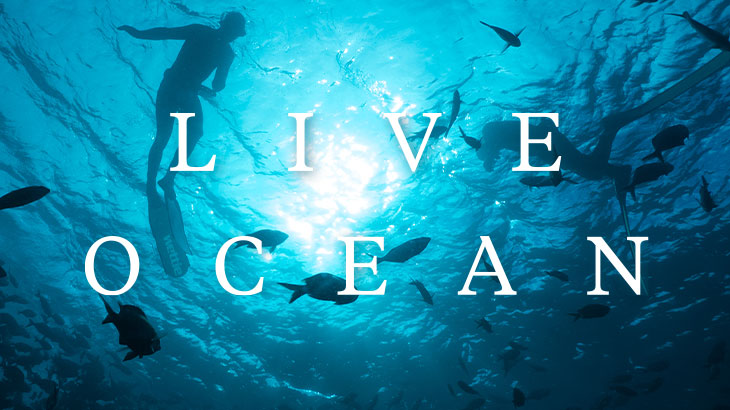Live Ocean
We all have a role to play in protecting and restoring our ocean – Live Ocean charitable trust is leading by example by backing world-class New Zealand talent.
We all have a role to play in protecting and restoring our ocean – Live Ocean charitable trust is leading by example by backing world-class New Zealand talent.
With more than 15,000 kilometres of coastline and just over four million square kilometres of ocean, New Zealand has the fourth largest ocean territory in the world.
The ocean plays a crucial role in the health of the planet – literally taking the heat for us by absorbing accumulated warmth in the Earth’s system, and producing at least 50 percent of the oxygen we breathe.
For Kiwis, the ocean is our playground and an important food source. It is easy to take it for granted, and to assume it will be in good health for future generations.
Olympic, world and America’s Cup sailing champions, Peter Burling and Blair Tuke, have spent the bulk of their recreational and professional lives on the water. Now they’ve put their hands up to be champions for a healthy ocean.
The pair has established a registered charitable trust, Live Ocean, to invest in, and support, promising marine science, innovation, and public education projects that will amplify and accelerate positive ocean action in New Zealand.
Burling says they want this country to be a world leader in the ocean restoration and protection space and while there have been some positive moves in this direction, we have a very long way to go.
“New Zealand was one of the first countries to have a marine protected area, but we only protect 0.4 percent of our ocean.
“The science community is telling us we need to protect 30 percent of it by 2030 and we want to get New Zealanders on board with this – as well as the need to restore the ocean.
“We have to do something, we need people to rally on these important issues and as New Zealanders, we need to ask ourselves what our global responsibilities are.”
There are complex issues at play in the ocean and Burling and Tuke are encouraging us to listen and support the science community, as well as stepping up to our role as a country of ocean guardians.
The pair say while there is undoubtedly a lot of work to be done, Live Ocean’s first focus was joining the race to save the Antipodean albatross. New Zealand is considered the seabird capital of the world, yet 90 percent of New Zealand seabirds are threatened with, or are at risk of, extinction.
As well as working with selected projects in the Hauraki Gulf, Live Ocean’s current focus is supporting world-leading research by the University of Auckland into our recovering southern right whale population.
“Live Ocean is helping fund important research by the University of Auckland into New Zealand’s southern right whale/tohorā, which is a sentinel species for climate change,” says Tuke.
“It was called the ‘right’ whale, because they’re slow moving and docile which made them the ‘right’ whale to hunt. The tohorā population was down to as few as 40 in the 1920s on the back of whaling activity and is now in a slow recovery phase.
“But our ocean is in trouble as it responds to climate change, pollution and over-fishing, in even the most remote parts.
“New Zealand waters contain major highways for whales, sharks, turtles, tuna and seabirds, so we have a special and significant role in advancing global understanding in this area.”
How the changes in the ocean are impacting New Zealand’s tohorā population is currently unknown however, global trends show the whales are breeding less than the usual three-yearly.
Scientists think there’s a link between the whales’ changing feeding patterns and the changing ocean. Either less food is available, or their food is moving away from traditional feeding grounds. Without enough food, whales cannot breed or nurse their calf while they fast during winter.
The University of Auckland scientists, led by Dr. Emma Carroll, headed to the Auckland Islands in winter this year and will do so again in 2021 to study the southern right whales in their winter breeding grounds.
“An international hunting ban and a marine reserve in the Auckland Islands allowed the whale population to recover to approximately 2,000 whales as of 2009 thanks to the refuge provided for breeding and raising calves during winter,” says Dr. Carroll.
“As tohorā recover they are likely to become a more common sight around mainland New Zealand, and we need to consider how we welcome them into our coastal waters.
“The results of our research will provide the context to have a broader discussion about how to plan for nature in our waters.”
The Tohorā Research Programme in the Auckland Islands aims to:
• Characterise how tohorā use the Auckland Islands and Campbell Island marine reserves using satellite technology, 17 years on from the formation of the marine reserve
• Find out where the whales go and where they feed in a changing ocean after they leave the safety of their breeding grounds using satellite tracking
• Use DNA analysis of kin relationships to estimate recovery of the population.
It is heartening that sightings from the New Zealand mainland have become more common, with the southern right whale, Matariki, putting on an acrobatic display in the harbour and captivating Wellington locals in 2018 and the encouraging news that it seems likely a calf was born in Southland, in August 2020.
Burling and Tuke say as a team, New Zealanders can do hard things – as shown in our collective health response against COVID-19 – so they’re hoping the country will get behind the Live Ocean initiative to again show the world how resourceful and committed we are as a nation.
To find out more about Live Ocean, go to liveocean.com
Read more...
[Download PDF guide]